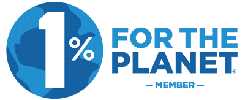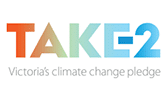WordPress remains the most popular content management system (CMS) worldwide – a whopping 42% of all websites globally are WordPress sites.
Before we continue, it’s worthwhile to clarify the difference between WordPress.org and WordPress.com here. It sounds just about the same, but it isn’t. WordPress.org is the home of very flexible and scalable open-source software.
It is free to use, allows for third-party integration and gives you the tools to create good-looking websites with relative ease. WordPress.com, on the other hand, is just one application of this open-source platform and is usually more expensive and difficult to customise.
Which one’s better? Well, comparing the pros and cons is a matter before deciding what will work best for your business. Regardless of whether it’s .org or .com, the popularity of WordPress has unfortunately made it a target for hackers. So it’s essential to take a few extra steps to protect your WordPress site from potential threats.
It’s not all doom and gloom, though! We can show you how to ensure your WordPress remains secure from hackers and how to add a security certificate to WordPress.
Read on to discover seven easy steps and simple tips to keep your website shipshape and protected.

7 ways to keep your WordPress website secure
1. Keep WordPress plugins updated
Your phone or laptop prompts you to update every so often to keep things running smoothly. Well, the same goes for WordPress and its plugins. It’s important to keep on top of new versions. These updates are there to fix security issues and vulnerabilities. They also give you access to the latest features and functions.
2. Use strong passwords and two-factor authentication
Weak passwords are one of the easiest ways for online gremlins to gain access to your WordPress site. Use strong, unique passwords for your WordPress admin account and all other accounts associated with your website.
Although this WEF report makes for some sobering reading, we’re not saying your passwords must be a long list of numbers and letters. But add upper and lowercase letters and get creative with numbers and symbols, and you will drastically up your cybersecurity. Make each password memorable, one you can’t forget and don’t need to write down anywhere.
And enabling two-factor authentication (2FA) adds an extra layer of security. This additional step usually sends a login code to your phone or email address.
3. Limit login attempts
This is a simple way to prevent brute-force attacks and fend off hackers. Brute-force attacks are a cybercrime where hackers try to guess your password by entering different combinations of characters until they find the correct one. You can use a plugin to limit the number of login attempts to your WordPress site.
4. Use security plugins
Security plugins can give you peace of mind knowing that your site is being protected 24/7. They help keep your content secure by providing features such as malware scanning and monitoring for malicious code, firewall protection, and file integrity monitoring.
Some ban spam, bots and users known to have attacked other websites and others, yet include a strong password generator. Top security plugins include Wordfence,Sucuri Security and iThemes Security.
5. Secure your plugins
Speaking of plugins, it pays to do a bit of research. Only install plugins from a reputable source and keep them updated. You will also need to check the plugin’s compatibility with your WordPress version before installing it.
Also, make sure you do away with unnecessary plugins – remove the ones you no longer use.
6. Use HTTPS and SSL
Using HTTPS and SLL (Secure Sockets Layer) adds an extra layer of security by encrypting data between your website and visitors’ browsers. This helps protect sensitive information, such as login credentials and payment details, from being intercepted by hackers. And, just as important, it signals users that your website is trustworthy.
You can enable HTTPS and SSL by installing an SSL certificate. And in case you wondered how to add a security certificate to a WordPress website – it’s easy. SSL certificates are included in all our Green Web Hosting packages.
7. Regularly back up your website
Sometimes following the recipe to the last drop of icing still doesn’t produce the amazing cake we were promised in the picture. Similarly, all the protection available may not guarantee complete security from online threats. That’s why regular backups are so important.
Ask yourself this: what would you lose if your website was compromised or you accidentally deleted data? How would this impact your business and your customers?
Regularly backing up your website will help you recover your data. While a good web hosting service will offer automatic backup services, you can also use plugins like UpdraftPlus or BackWPup to create backups.
Secure your WordPress website
Security doesn’t have to be a drag. Definitely necessary, but not evil. It pays to do a bit of research to find the platform and tools for your business needs. Or, concentrate on your core business and let us take the hassle out of all the updates, plugins, and monitoring.
Contact us to discuss your options, and let us provide you with a managed WordPress solution that fits your needs and gives you more peace of mind.














